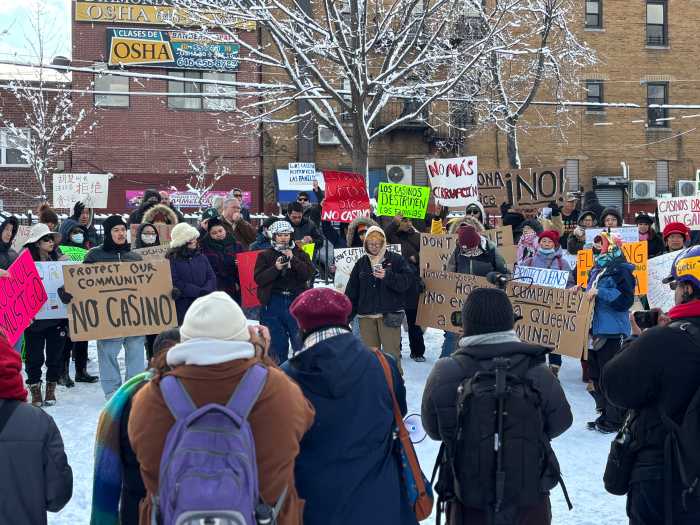Less than a year after announcing his 10-year plan to shut down Rikers Island, Mayor Bill de Blasio said today that one of nine jails will be shut down this summer.
The Department of Corrections will close the George Motchan Detention Center, which currently houses 600 men awaiting trail or sentencing. According to the mayor, this closure is possible because of the “dramatic reduction” in the jail’s population.
As of Jan. 1, the city’s jail population was 8,705, and December marked the first time the number fell below 9,000 since 1982.
“Every day we are making New York City’s jail system smaller and safer,” de Blasio said in a statement. “This announcement is an important step in our plan to close Rikers Island and create more community-based facilities to better serve people in custody and our hard-working correctional staff.”
The move will help DOC reduce overtime and provide training and support to staff. There will be no layoffs as a result of the closure and officers will be transferred to one of the remaining eight facilities.
The city will move to a system of smaller, borough-based jails once the population is further reduced.
In 2016, then-Council Speaker Melissa Mark-Viverito proposed shutting down the jail and she requested that a group look at the viability of that plan. The Lippman Commission is composed of criminal justice reform groups, corrections groups, former prosecutors, the business community and more.
In its 97-page report reviewed by The New York Times, the Lippman Commission recommended that the jail be closed and that instead, inmates be moved to smaller jails in each borough. Constructing the jails, which in total would include 5,500 beds, would cost approximately $10.6 billion.
In March 2016, rumors began circulating that College Point would be the site of one of the smaller jails though the city never confirmed the report.
Recently, the city released a request for proposals to identify sites for the borough-based jails and to gauge the capacity of the three existing jails in Manhattan, Brooklyn and Queens.
To keep the number of inmates low, the administration has launched several programs that provide an alternative to sentencing. In 2016, Supervised Release was introduced as an alternative to bail. Judges can now assign low-risk defendants to a program that allows them to stay home and continue working while awaiting trail.
In 2017, the city announced that all inmates will receive re-entry services to connect them with jobs when they are released and five hours of programming per day for vocational, educational and therapeutic needs when they’re serving time. Those charged with short jail sentences for low-level, minor offenses now participate in services that help reduce recidivism instead.
In September of 2016, hundreds of people marched through Astoria demanding that the city shut down the jail complex. Organized by JustLeadershipUSA, celebrities, elected officials, community leaders and citizens participated in the rally.
Some Queens elected officials applauded the mayor’s announcement to shut down the complex. In a 2017 statement, Councilman Daniel Dromm said, “Rikers Island’s culture of violence remains a constant threat to the well-being of both corrections officers and the incarcerated.”
State Senator Joe Addabbo said the city should instead reform the jail complex “instead of creating new problems with siting facilities across the boroughs.”
Councilman Rory Lancman argued that the 10-year timeline was too long and in May 2017 he proposed a three-point plan that would result in three-year shutdown instead.
Currently, existing borough-based jails only have the capacity to house 2,300 inmates. The mayor’s plan, which was informed by the Lippman Commission report, outlines a goal to reduce the prison population to 5,000 inmates before closing Rikers Island.
“The Department of Correction and the city are committed to closing Rikers and today, we begin delivering on that commitment,” said DOC Commissioner Cynthia Brann. “It is something we are able to do because of our department’s reforms in creating safer jails and the city’s work in creating a fairer criminal justice system. Under Mayor de Blasio’s administration, we have reduced our jail population by 21 percent and have helped make our jails safer. We will continue building on our progress in reducing our jail population through programs that provide life and work skills that help individuals in custody re-enter our community.”




































